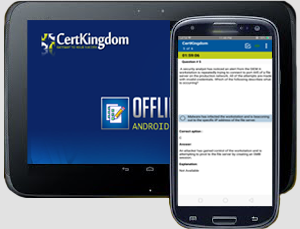Exam: 1Z0-1123-24

|
|||||||||||||||||||||||||||
1Z0-1123-24 Oracle Cloud Infrastructure 2024 Migration Architect Professional
Earn associated certifications
Passing this exam is required to earn these certifications. Select each
certification title below to view full requirements.
Oracle Cloud Infrastructure 2024 Migration Architect Certified Professional
Format: Multiple Choice
Duration: 90 Minutes
Number of Questions: 55
Passing Score: 65%
Validation: This exam has been validated against Oracle Cloud Infrastructure
2024
Policy: Cloud Recertification
Prepare to pass exam: 1Z0-1123-24
The Oracle Cloud Infrastructure 2024 Migration Architect Professional
Certification is designed for migration architects engaged in migrating
workloads to OCI. This certification validates an individualís skill and
knowledge in using Oracle Cloud VMware solution to migrate VMs to OCI, assessing
Oracle Cloud Migrations service to design and implement migrations, leveraging
Oracle Container Engine for Kubernetes to migrate containerized applications to
OCI, performing on-premises data migration to OCI, and appraising various
database migration services available in OCI.
It is recommended that candidates appearing for this certification possess an
understanding of on-premises VMware-based environments and on-premises Database
deployments. Candidates should have 6 months or more of hands-on experience with
Oracle Cloud Infrastructure.
Take recommended training
Complete one of the courses below to prepare for your exam (optional):
Become an Oracle Cloud Infrastructure Migration Architect Professional
Additional Preparation and Information
A combination of Oracle training and hands-on experience (attained via labs
and/or field experience), in the learning subscription, provides the best
preparation for passing the exam.
Review exam topics
The following table lists the exam objectives and their weightings.
Objectives % of Exam
Fundamentals of Cloud Migrations 10%
OCI Networking Services for Migrations 5%
Design and Implement Migrations Using Oracle Cloud Migrations Service 20%
Design and Implement Migrations Using Oracle Cloud VMware Solution (OCVS) 15%
Migrate Containerized Applications to OCI 10%
Migrate Infrastructure Workloads Between OCI Regions 15%
Implement Migration Methods for Secure and Efficient Data Transfer to OCI 10%
Migrate Oracle Databases to OCI Database Services 15%
Fundamentals of Cloud Migrations
Explain the fundamentals of cloud migrations
OCI Networking Services for Migrations
Explain the fundamentals of OCI Networking services
Understand the OCI Connectivity options
Design and Implement Migrations Using Oracle Cloud Migrations Service
Explain the fundamentals of the Oracle Cloud Migrations service
Design and implement the discovery, inventory, planning, and assessment tasks
for migration
Perform replication and execution tasks for migration
Design and Implement Migrations Using Oracle Cloud VMware Solution (OCVS)
Perform source discovery to understand infrastructure resources in an
on-premises environment
Design the target OCVS environment based on migration pre-requisites
Perform migrations using Hybrid Cloud Extension
Migrate Containerized Applications to OCI
Explain the fundamentals of OCI Container Engine for Kubernetes and Oracle
Cloud Infrastructure Registry
Understand the phases involved in migrating containerized workloads to OCI
Migrate Infrastructure Workloads Between OCI Regions
Understand OCI Object Storage Replication and Object Copy
Implement OCI Block Volume Replication
Implement OCI File System Replication
Design and implement OCI Full Stack Disaster Recovery Service
Implement Migration Methods for Secure and Efficient Data Transfer to OCI
Migrate data using the OCI Data Transfer service
Implement OCI Storage Gateway
Migrate Oracle Databases to OCI Database Services
Analyze and design a successful database migration plan
Explain the different methods for migrating to OCI Database Services
1Z0-1123-24 Brain Dumps Exam + Online / Offline and Android Testing Engine & 4500+ other exams included
$50 - $25 (you save $25)
Buy Now
QUESTION 1
As a migration architect, you are tasked with transferring objects across
buckets within the same
region and to buckets in different regions. Which feature of Oracle Cloud
Infrastructure (OCI) Object
Storage should you utilize to accomplish this data migration?
A. Object Transition
B. Object Copy
C. Object Move
D. Object Mirroring
Answer: B
Explanation:
Object Copy in OCI Object Storage allows you to make a copy of an object within
the same bucket,
across buckets within the same region, or to buckets in different regions. This
feature is specifically
designed for accomplishing data migration tasks within OCI Object Storage.
QUESTION 2
You are working on a migration initiative as part of a cloud transformation
project and leveraging
Oracle Cloud Migrations service. Which is a valid use case for Oracle Cloud
Migrations service?
A. Migrate Virtual Machines from an on-premises environment to containers in
Oracle Container Engine for Kubernetes (OKE)
B. Migrate Virtual Machines from an on-premises environment to Oracle Cloud
VMware Solution (OCVS)
C. Migrate Compute instances between different OCI Regions
D. Migrate Virtual Machines from an on-premises environment to OCI Compute
instances
Answer: D
Explanation:
Migrating Virtual Machines from an on-premises environment to OCI Compute
instances is a valid
use case for Oracle Cloud Migrations service. This service allows for the
seamless migration of Virtual
Machines to Oracle Cloud Infrastructure Compute instances, enabling
organizations to leverage the
benefits of cloud infrastructure.
QUESTION 3
How does the Copy to another region feature in Oracle Cloud Infrastructure (OCI)
aid in achieving smooth transitions during Block Volume migration?
A. It compresses backup data before transferring, thereby expediting the
migration process
B. It automates the migration process by transferring applications between
regions
C. It ensures real-time data synchronization during migration for minimal
downtime
D. It replicates Block Volume backups to a target region, enabling smooth data
migration
Answer: D
Explanation:
The correct choice is that the Copy to another region feature in OCI aids in
achieving smooth
transitions during Block Volume migration by replicating Block Volume backups to
a target region.
This enables a seamless data migration process without the need for manual
backup and restore operations.
QUESTION 4
You have been tasked with provisioning an Oracle Cloud Infrastructure
Container Engine for
Kubernetes (OKE) cluster to deploy new applications and manage existing ones.
Which two statements are FALSE?
A. To access the cluster using kubectl, you have to set up a Kubernetes manifest
file stored in the $HOME/.manifest directory
B. When a cluster's Kubernetes API endpoint has a public IP address, you can
access the cluster in Cloud Shell by setting up a kubeconfig file
C. The only available option when a cluster's Kubernetes API endpoint has a
public IP address is to control the cluster locally using kubectl and the
Kubernetes Dashboard
D. To access the cluster using kubectl, you have to set up a Kubernetes
configuration file stored in the $HOME/.kube directory
Answer: A, C
Explanation:
Setting up a Kubernetes manifest file in the $HOME/.manifest directory is not a
standard practice for
accessing a Kubernetes cluster using kubectl. Manifest files are used to define
and manage
Kubernetes resources, such as pods, deployments, and services, but they are not
used for configuring access to the cluster.
While controlling the cluster locally using kubectl and the Kubernetes Dashboard
is one way to
interact with a cluster, it is not the only available option when a cluster's
Kubernetes API endpoint
has a public IP address. You can also access and manage the cluster remotely
using kubectl from any
environment that has network connectivity to the cluster.
QUESTION 5
What is the primary purpose of deploying a Remote Agent Appliance in an
on-premises environment when using the Oracle Cloud Migrations (OCM) service?
A. To perform real-time data compression and deduplication of the source data to
be transferred to OCI
B. To serve as a temporary storage buffer to cache data before it is transferred
to OCI
C. To facilitate direct VPN connectivity between the on-premises data center and
OCI
D. To discover on-premises workloads and provide detailed inventory information
to OCI
Answer: D
Explanation:
The primary purpose of deploying a Remote Agent Appliance in an on-premises
environment is to
Buy Complete
Certainly, here's a rewritten version of your text:
Packiam Vijendran 1 months ago - Malaysia
Passed the exam yesterday, 95% of the question were from this site. Note: Pay
more attention to all the community discussions on each question, instead of the
answers provided by the examtopics and I strongly suggest to get the contributor
access.
upvoted 4 times
Javier Cardaba Enjuto 2 months, 1 week ago - Spain
Excellent pre-exam session tool
upvoted 2 times
Palanisamy Arulmohan 1 months, 1 week ago - USA
I passed today, 94 questions asked and 99% of them were in this dump.
3 labs: BGP (as-override), HSRP, OSPF (without network statement)
upvoted 4 times
peppinauz 3 months, 2 weeks ago
I pass my exam, dump is valid about 90-95%. review the community answers!!
upvoted 6 times
Oberoi Ankit3 months, 3 weeks ago - USA Texas
Passed exam today dump still accurate. almost all the questions are here, some
are overcomplicated or incomplete on the site,
upvoted 4 times
logged members Can Post comments / review and take part in Discussion
Certkingdom Offline Testing Engine Simulator Download
Prepare with yourself how CertKingdom Offline Exam Simulator it is designed specifically for any exam preparation. It allows you to create, edit, and take practice tests in an environment very similar to an actual exam.
Supported Platforms: Windows-7 64bit or later - EULA | How to Install?
FAQ's: Windows-8 / Windows 10 if you face any issue kinldy uninstall and reinstall the Simulator again.
Download Offline Simulator-Beta
Certkingdom Testing Engine Features
- Certkingdom Testing Engine simulates the real exam environment.
- Interactive Testing Engine Included
- Live Web App Testing Engine
- Offline Downloadable Desktop App Testing Engine
- Testing Engine App for Android
- Testing Engine App for iPhone
- Testing Engine App for iPad
- Working with the Certkingdom Testing Engine is just like taking the real tests, except we also give you the correct answers.
- More importantly, we also give you detailed explanations to ensure you fully understand how and why the answers are correct.
Certkingdom Android Testing Engine Simulator Download
Take your learning mobile android device with all the features as desktop offline testing engine. All android devices are supported.
Supported Platforms: All Android OS EULA
Install the Android Testing Engine from google play store and download the app.ck from certkingdom website android testing engine download

Certkingdom Android Testing Engine Features
- CertKingdom Offline Android Testing Engine
- Make sure to enable Root check in Playstore
- Live Realistic practice tests
- Live Virtual test environment
- Live Practice test environment
- Mark unanswered Q&A
- Free Updates
- Save your tests results
- Re-examine the unanswered Q & A
- Make your own test scenario (settings)
- Just like the real tests: multiple choice questions
- Updated regularly, always current




